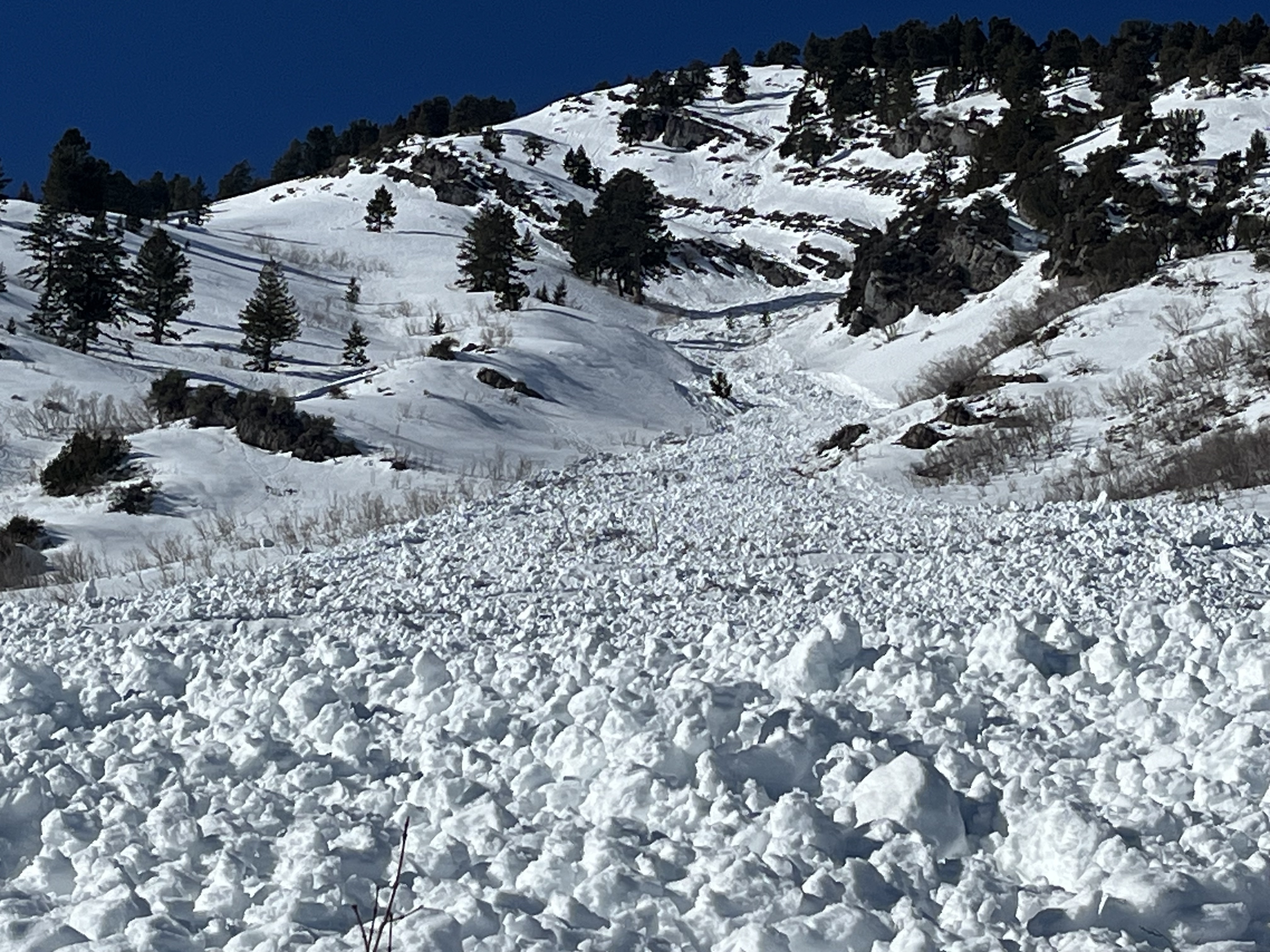Even though temperatures stayed above freezing last night up high, clear skies allowed for a decent surface refreeze, and the snow surface is crusty at all elevations. The snow in sunny terrain is supportable and smooth, and we found pretty good spring-like "corn" snow conditions yesterday morning in the Wellsville Range.
Wind blowing from the south increased significantly overnight, and this morning, the 9700' CSI Logan Peak weather station is recording average wind speeds of around 35 mph, and it's 31° F. At 9500' on Paris Peak, it’s 28° F, and winds are blowing around 10 mph from the south. The Tony Grove Snotel at 8400' reports 33° F and 71 inches of total snow containing 118% of average SWE (Snow Water Equivalent).
Today, expect high temperatures at 8500' around 36° F, with increasingly cloudy skies and winds blowing around 20 mph from the south. There is a good chance this afternoon of some snow up high and a bit of rain on mid and lower-elevation slopes, with little in the way of accumulation expected. The National Weather Service has issued a
Winter Weather Advisory beginning this afternoon and continuing through Saturday. Snow is expected in the higher elevations tonight, with 1 to 3 inches of accumulation possible, winds blowing out of the southeast, and temperatures dropping to around 24° F. Rain is likely at low elevations. Snowfall will increase a bit on Friday, with 2 to 4 inches on upper-elevation slopes, winds veering from the west, and 8500' high temperatures around 31° F. Expect light snowfall to continue Friday night and Saturday with a few additional inches of accumulation possible.
A natural wet loose and hard slab avalanche cycle occurred Sunday due to rapid warming. The wet activity mainly occurred on south-facing slopes at all elevations, and some large slab avalanches failed on the December persistent weak layer.
- Evidence of a large natural wet avalanche was observed Tuesday on Mitton Peak in the Wellsville Mountain Wilderness. The avalanche, visible from Highway 89/91, started at around 8400' in elevation on a southeast-facing slope and ran around 2000 vertical feet.
- A very large natural wet avalanche was witnessed by a professional observer in Green Canyon a little after noon on Sunday. see the report
- A large avalanche on Wilderness Peak near Gibson Lakes in Franklin Basin was either naturally occurring or remotely triggered by riders on Sunday. It was reported on Monday by riders who noticed recent sled tracks in the area. report is here
Tuesday's wet avalanche on Mitton Peak entrained a large pile of heavy debris and ran around 2000 vrt'
Check out local observations and avalanches
HERE.











